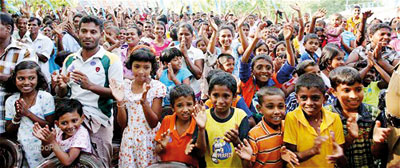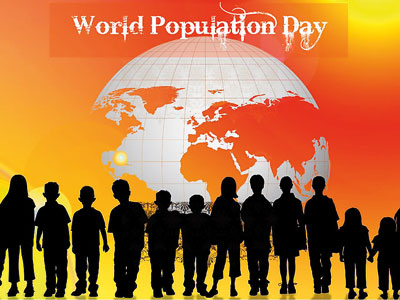World Population Day
View(s):The World Population Day was instituted in 1989 by the Governing Council of the United Nations Development Programme and is observed on the 11th of July annually. It happened due to an outgrowth of the interest generated when the world population reached five billion on the 11th of July 1987. The UN authorised the event as a vehicle to build an awareness of population issues and the impact they have on development and the environment. World Population Day aims to increase people’s awareness about various population issues such as the importance of family planning, gender equality, poverty, maternal health, and human rights.

The world’s most populous nation is China with an approximate population of 1.42 billion people and the second is India with a population of 1.37 billion people. The next three nations with the highest populations are U.S.A., Indonesia and Brazil although all three combined will not reach a billion. The total world population is approximately 7.7 billion. It has been estimated that the world population increases by 100 million every 14 months.
The current population of Sri Lanka is 21,018,747 as of Monday, July 1, 2019, based on the latest United Nations estimates. This is 0.27% of the world population. It is estimated that the population of Sri Lanka increases daily by 290 persons. The population density is relatively high as the land area is only 62,710 square kilometres. The density is 335 per square km. According to the estimations of ‘countrymeters’, daily change rates of Sri Lanka population in 2019 will be the following:
- 948 live births average per day
- 384 deaths average per day
- -274 emigrants average per day
- Below are the key figures for Sri Lanka population in 2018:
- 344,279 live births
- 139,516 deaths
- Net migration: -99,444 people
- 10,382,018 males as of 31 December 2018
- 10,703,112 females as of 31 December 2018
Around 42.6% of the population lies in the age bracket of 25-54 year old individuals, 9.1% in the 54-65 year age bracket and 8.1% above the age of 65.
This year’s World Population Day calls for global attention to the unmet goals of the 1994 International Conference on Population and Development, where 179 governments recognised that reproductive health and gender equality are essential for achieving sustainable development. An extensive programme of action was adopted at this conference. It called for all people to have access to comprehensive reproductive health care. It also recognised that reproductive health and women’s empowerment are intertwined, and that both are necessary for the advancement of society. “The full and equal participation of women in civil, cultural, economic, political and social life, at the national, regional and international levels, and the eradication of all forms of discrimination on grounds of sex, are priority objectives of the international community,” the Programme of Action affirmed. “By improving health and empowering women, population growth comes down” said Bill Gates.
The report states that the implementation of the recommendations contained in the Programme of Action is the sovereign right of each country, consistent with national laws and development priorities, with full respect for the various religious and ethical values and cultural backgrounds of its people, and in conformity with universally recognised international human rights. It is a detailed report providing possible recommendation for action giving the objectives for each action. As an example, for actions suggested for inter-relationships between population, sustained economic growth and sustainable development, the objective is stated as follows: “The objective is to raise the quality of life for all people through appropriate population and development policies and programmes aimed at achieving poverty eradication, sustained economic growth in the context of sustainable development and sustainable patterns of consumption and production, human resource development and the guarantee of all human rights, including the right to development as a universal and inalienable right and an integral part of fundamental human rights. Particular attention is to be given to the socio- economic improvement of poor women in developed and developing countries. As women are generally the poorest of the poor and at the same time key actors in the development process, eliminating social, cultural, political and economic discrimination against women is a prerequisite of eradicating poverty, promoting sustained economic growth in the context of sustainable development, ensuring quality family planning and reproductive health services, and achieving balance between population and available resources and sustainable patterns of consumption and production.”
In November, UNFPA, together with the governments of Kenya and Denmark, will be convening a high-level conference in Nairobi to accelerate efforts to achieve these unmet goals in the report. On World Population Day, advocates from around the world are calling on leaders, policymakers, grassroots organisers, institutions and others to help make reproductive health and rights a reality for all. It is said that while the food production growth follows an arithmetic progression, population increase shows a geometric progression, indicating that the rate of growth of the population is much higher than the increase in food production. Some may argue that these two have a negative correlation as the available land for cultivation becomes less with population growth. Let us be mindful of the effects of the population growth knowing that the available resources are finite. “If we do not voluntarily bring population growth under control in the next one or two decades, the nature will do it for us in the most brutal way, whether we like it or not” said Henry W. Kendal.
R.N.A. de Silva
ndesilva@osc.lk
The author is a member of the faculty of the Overseas School of Colombo.


